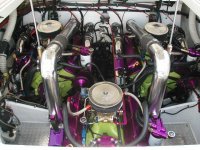I never thought of powdercoat as a layer of plastic, there are all sorts of powders for different applications and temperatures. Who did the powdercoat was it done in house or by a job shop, was it done in a professional powder booth or a homemade type kit.
If you get me some more information, I will try to get you the answers, I sell powder coating filters all over the US and one of my customers is the leading manufacturer of Powder Coating Equipment in the world, plus I sell to a lot of distributors that sell and service equipment.
If anyone works at a facility where they have powder coating equipment or dust collection equipment PLEASE send me a PM. I really need to validate some of the time I spend on SOS


